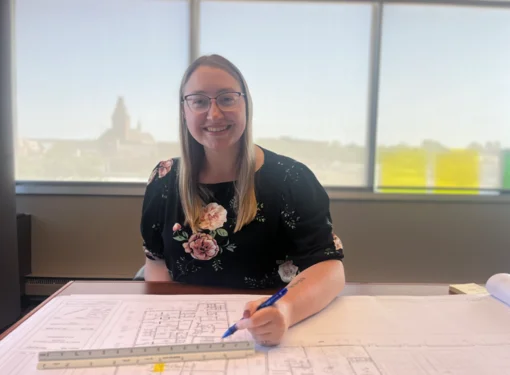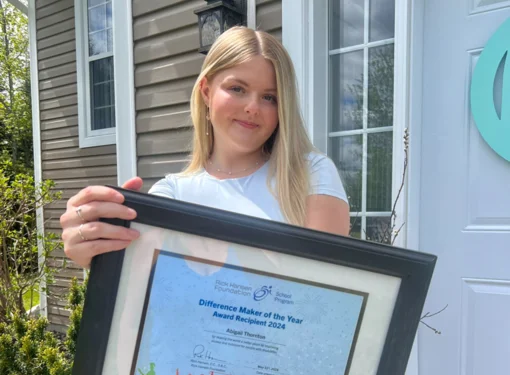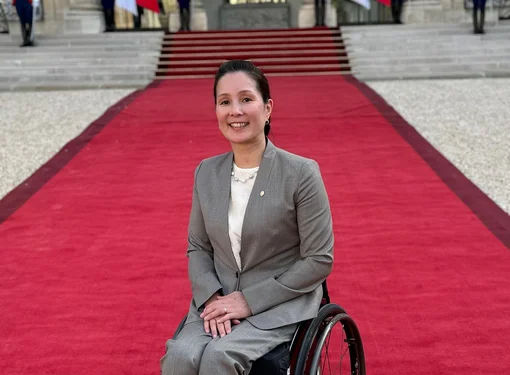Aiming to Become Canada’s Most Accessible Neighbourhood: CNIB’s BlindSquare Enabled Project
Imagine walking down the street in your community without being able to see what stores or restaurants are available. Trying to shop, pick up a coffee, or enjoy a meal would suddenly become much more challenging. For people who are blind or have low vision, this is often an everyday reality. Without asking a sighted companion or a stranger for assistance, it’s hard to know what amenities exist, or even where they’re precisely located.
But this is all changing in one of Toronto, ON’s most vibrant neighbourhoods. The new Canadian National Institute for the Blind (CNIB) Community Hub has started installing ShopTalk: BlindSquare Enabled navigation beacons in the surrounding retail area of Yonge St. and St. Clair Ave, with cooperation from local businesses. The goal is to make the neighbourhood the most accessible in that city – if not in all of Canada.
The BlindSquare beacon project was made possible by a Barrier Buster grant from the Rick Hansen Foundation as part of its Access4All Canada 150 Signature Project, supported by the Government of Canada. Even though the technology is sophisticated, the beacons can be easily accessed and used by everyone.
Here’s how they work. As people walk along the street or emerge from the St. Clair subway station, the navigation beacons link to the BlindSquare app that users have downloaded on their smartphones. The beacons announce the names of retailers as users travel along the sidewalk. For example, a beacon might say, ‘Starbucks to your immediate right’.
Once someone chooses a destination such as a café, the beacon relays detailed information about the surrounding environment. It may describe the location of tables, washrooms, or staircases, giving users the knowledge they need to make their way safely in and around a space. Beacons can even tell users the business hours.
“This project is already altering the experience for every blind person who visits the neighbourhood,” says Janet Whitney, manager of Corporate Partnerships & Foundation at CNIB.
Improved access means greater independence
People with vision disabilities are one of many disability groups benefitting from improved access to the community. The BlindSquare app can be used by anyone who needs help with way-finding, including people with mobility or cognitive disabilities, people affected by memory loss, and seniors. People with autism who may not be comfortable interacting with others can use the app to find places on their own.
Results so far show the beacons are working. At the CNIB Hub, the number of visitors who are blind or have low vision has significantly increased since the beacons were installed. The Hub is the basis for over 30,000 clients in the Greater Toronto Area. Approximately 200 people are visiting the Hub each month.
To date, 150 out of the planned 200 beacons have been installed in the Hub’s vicinity. Enthusiastic adopters of the beacons include major property development companies in the area, organizations such as major banks, and a number of independent retailers and restaurants.
Interest in the project continues to grow, with inquiries from business owners a few blocks from the Community Hub and from the main transit connection area to CNIB's head office. In the next few years, it might be possible to find beacons in every subway station in the Toronto transit system.
To promote awareness of the project and encourage use of the beacons, the CNIB has been working with a variety of organizations, from small, local disability groups to government agencies like Services Canada. The Service Canada office at Yonge and St. Clair currently has a beacon as a pilot. The learnings from this pilot, along with the support of CNIB, will help inform how beacons are deployed elsewhere in Toronto, or maybe even in Canada.
The CNIB credits its dedicated volunteer pool with the project’s success. Volunteers, including people with disabilities, were an essential resource. They canvassed businesses, tested beacons, and developed, programmed, and maintained beacon messaging.

New perspectives on vision disabilities
At an awareness event held in November 2017, a diverse group of people from all parts of society met to showcase the project and highlight the deeper need in our communities for improved accessibility and inclusion.
CNIB clients spoke to business executives, who then talked with independent business owners, not for-profit organizations, local politicians, and representatives from the technology sphere who wanted to learn more about the beacons.
The event was fully accessible to people with vision disabilities by providing sighted guides who introduced people to one another in an unfamiliar environment. The CNIB worked with a videographer on an audio track so people with sight loss could have an equal experience watching a video made about the project. They added braille to the recognition plaque about the project and placed it in a location and at a height that makes it easy for braille users to read.
Outside on the street, the innovative beacons continue to make a big difference in the broader community.
“Feedback has been overwhelmingly positive. Businesses love that it’s helping people who are Blind or partially sighted, it’s free, and it’s something that hasn’t been done before,” says Kat Clarke, CNIB Advocacy Lead (Greater Toronto Area) and Specialist, Government Relations (Ontario).
“It’s heartwarming to hear from people who’ve lived here all these years who were not always aware of what places were around them until the beacons were put in,” says Kat. “They’re getting an experience of the neighbourhood they’ve never had before.”
Learn more about how the beacons work as blind user, Susan Vale, tests them out in this video by Emily Thompson and Maria de Teresa.




